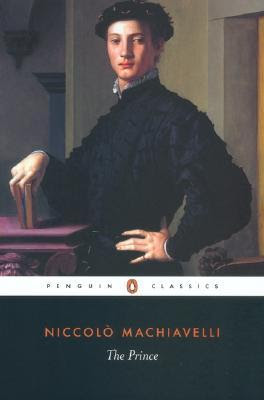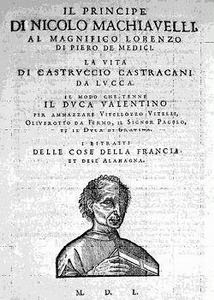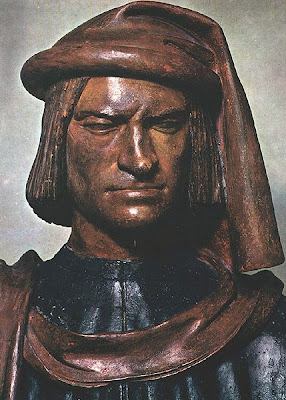Gina Mckee as Caterina Sforza at the Siege of Forli
My last entry on Caterina Sforza was a while ago, and for that I apologise. The Renaissance in general has just taken over my life recently, and in particular the goings on in Florence as well as general Borgia stuff. So today, I thought I would combine Caterina Sforza and my most favourite of Borgia men - Cesare Borgia. Today's post is a rather big jump in time from my last entry which covered the events of 1488, the death of her husband and her holding of the fortress of Ravaldino against the Orsi family. Today we jump forward to 1499, and in particular December of that year, when Cesare Borgia rode into Forli and began to besiege the town.
On 19th December 1499, Cesare Borgia rode into the main square of Forli sat upon a white horse, his men carrying the banner of the Borgia Bull. Borgia had previously been a Cardinal in the Roman Catholic Church but after the unfortunate and untimely death of his brother Juan in June 1497 he was released from his vows. In 1498 he had travelled to France where he married Charlotte D'Albret and was given the Dukedom of Valentinois, which earned him the nickname of "Valentino". By the time Cesare had reached Forli in December 1499, he had already begun his quest to take over the States of the Romagna. The taking of Imola and Forli was the first step in this, and Imola proved no obstacle to Cesare. He took it without a problem on 11th December before riding to Forli which would prove an obstacle to the Captain General of the Papal armies. Why? Because Caterina Sforza was not going to give up her town without a fight.
Paz Vega as Caterina Sforza in "Los Borgia"
Yet when Cesare entered the town on 19th December, he was so assured of victory that he rode with his lance at rest, a symbol of the victory he had supposed. He knew that Caterina would hold the castle, but the town proved to be no issue at all. He allowed his soldiers to do as they wished - plundering and raping - he made no effort to stop them despite the pleas from the townspeople, using the excuse that the soldiers were under the control of the King of France so he had no right to try and stop them. Instead, he promised the citizens of Forli that if he survived the upcoming battle with Caterina and her soldiers, he would give them back anything that they had lost due to the looting soldiers.
But what were the reasons behind Cesare taking these cities? Not only did Cesare want these lands for himself, as a building block for his own principality but the Pope wanted to stamp out the resistance to papal rule. These lands were part of the Papal states and as such their rulers were required to pay an annual tithe to the Papal coffers. Alexander VI began to make out that these rulers hadn't been paying their tithes, and needed sorting out. Add into this an incident which would have turned rather nasty, and it ended up as a recipe for disaster. When Caterina first learnt that Pope Alexander was planning to confiscate her lands, she is said to have sent a messenger to Rome by the name of Tomasino de Forli. Johannes Burchard reported:
"On that evening (that Cesare left Rome), a certain Tomasino of Forli, one of the Pope's musicians, was seized with a companion and taken to the Castel Sant' Angelo where they were both imprisoned. Tomasino had come to Rome with some poisoned letters which he had rolled up in a reed to present to the Pope, on the excuse that they were petitions from the citizens of Forli seeking some reconciliation with His Holiness. Had the pope accepted the letters, he would, after a few days or even hours, with no hope of remedy, have succumbed and died...But the details of the conspiracy came to the pope's ears. On his orders, the two men were arrested and questioned, and they plainly confessed the whole plan."
Probably not Caterina's greatest moment, but she still refused to give up. And she had managed to rebuff Cesare on at least two occasions from the battlements of Ravaldino. On December 27th, having become frustrated by Caterina's refusal to listen to his demands and the growing respect that his troops were gaining for her, he ordered a tunnel be dug under the moat to the castle walls. He then ordered cannon to be placed around the keep of Ravaldino. He had had enough, and he would blast her out if he had to.
Being given the poisoned letters in "Los Borgia"
On 28th December, Cesare gave the orders to begin bombarding the fortress of Ravaldino. The first phase of bombardment destroyed one of the fortresses defencive towers but Caterina still stood firm. She moved into the main keep and began returning fire, which devastated Cesare's troops and killed his artillery expert Constantino de Bologna. The death of this man really shook the morale of the troops and the french soldiers cried out that their king would give 10,000 ducats to bring Bologna back to life again. In the end, Cesare grew so desperate that he began offering a thousand ducats to any man who could bring him the corpse of Caterina's own artillery expert, or two thousand if the man was brought to him alive.
In a very clever ruse one January morning, a group of men dressed in cloaks came chanting through Cesare's camp. They said they were pilgrims on their way to Rome to celebrate the Holy Year and promised that they would pray for any who let them pass through in safety. The men made their way towards Ravaldino, the drawbridge came down and they went inside, giving Caterina another 40 men to defend the fortress. By now, the situation was getting dire for Cesare - he was waiting for money from his father to pay his troops and had received word that Giovanni Sforza had almost intercepted the chests of money. In response he concentrated all his firepower on the weakest section of the walls, the southernmost edge facing the mountains and he spent two days building trenches and fortifications to make sure he breached the wall. And as soon as the troops who had been inside the city returned from celebrating the feast of the epiphany, the assault began again. He battered the walls of the castle day and night, and slowly the walls began to crumble. But Caterina still held her ground, sending her men to try and repair the breaches as best as they could and worked at destroying the morale of Cesare's troops - even going so far as to paint insults on their own canon balls. But pieces of the walls kept on falling, creating a pathway across the moat.
On January 12th, the pay for his men had arrived and morale had stepped up when he offered incentives to his men if they worked harder to take the fortress. They threw everything they had at the now super weak wall, tearing a massive breach. The debris that fell from the widening hole in the wall made it too difficult for the defenders to repair it, as did well timed and well placed shots from Cesare's own cannon. Following a lunch with his commanders in which he boasted he would soon have Caterina in his hands, he issued an order to take the fortress. And as his men poured into the fortress, no shots greeted them, and the defenders did not even dare to greet Cesare's men head on. They had begun to desert their countess, and one brave man climbed to the top of the fortress to replace Caterina's standard with that of the Borgia bull. Forli now belonged to Cesare Borgia.
But Caterina still would not be beaten. She strode out of her keep and fought side by side with her remaining men. As her commanders fell around her, she fought her way back to the keep and locked the doors behind her. And she began to prepare for a siege. Cesare however, now fully confident of his victory had his trumpet signalled, calling Caterina out to him for the third and final time. He acted concerned, begged her to stop this madness. She replied that if he was so concerned he should show mercy to her townspeople. But before she could say anything more, a hand fell on her shoulders and she was told that she was now a prisoner of the lord of Dijon. She had been betrayed by men who had been inside the walls of her own keep.
Cesare now bided his time before entering the keep properly, waiting for the last remnants of his enemies to be subdued. But once he entered, the french captain demanded his reward from Cesare for capturing the countess. Cesare ordered that the man be paid 2000 ducats but the captain replied that Cesare had publicly promised 10,000 ducats. The captain then threatened to slice Caterina's throat if the full amount was not paid. Yves D' Allegre also pointed out that under French law no woman could be held as a prisoner of war which was what she would be if she was handed over to the Borgia. Cesare insisted however that she be handed over to him for safe-keeping and promised that she would be kept safe. Once she had been handed over however, Borgia bustled her out of the keep and through the carnage surrounding her castle.
She would then be taken to Rome where she would be held as prisoner but not before, it is said at any rate, Cesare held her in the castle of a local nobleman and raped her. This part of her history, along with her imprisonment in Rome, however is the next part of her story. But for now, the famous Tigress of Forli had been beaten by the Borgia Bull.
Further Reading


























.jpg)
































